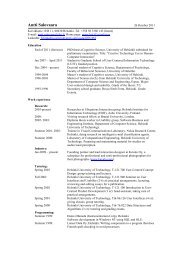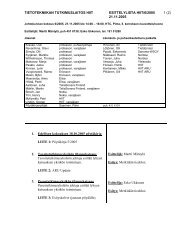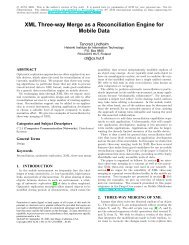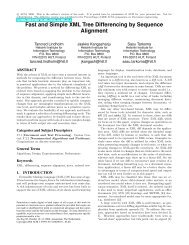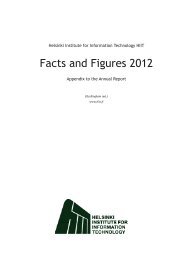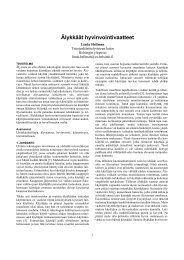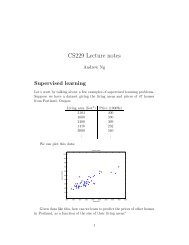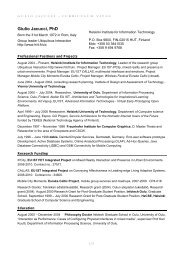Comparison of EndâUser Electric Power Meters for Accuracy
Comparison of EndâUser Electric Power Meters for Accuracy
Comparison of EndâUser Electric Power Meters for Accuracy
Create successful ePaper yourself
Turn your PDF publications into a flip-book with our unique Google optimized e-Paper software.
The small loads we used were a charger and a compact fluorescent lamp. Battery<br />
eliminator with 1 W load is a normal small voltage trans<strong>for</strong>mer with resistive load<br />
(24 Ω) connected to it. This corresponds to a typical very small load, such as<br />
charging a mobile device. Compact fluorescent lamp (CFL) also has a low nominal<br />
power (15 W)and a very difficult current wave<strong>for</strong>m.<br />
In the category <strong>of</strong> regular loads, 2x36 W fluorescent tubes have choke to limit<br />
current flow, which makes their load bit inductive. Even more challenging target<br />
was an older, non‐power factor corrected computer (non‐PFC ATX PC, AMD 1<br />
GHz Duron). In the tests, a webpage was opened on full screen, simulating web<br />
surfing, and screensaver and power saving modes were disabled . There<strong>for</strong>e this<br />
computer did not have major difference in consumption between different<br />
computational loads. Parallel to the PC, we connected a 19” CRT monitor to test<br />
meters capability to measure switching power supply load. This older computer<br />
also had high power consumption, and the combined nominal power <strong>of</strong> the setup<br />
was 170 W. This computer setup was used to per<strong>for</strong>m the electricity consumption<br />
measurement.<br />
Incandescent lamps dimmed to operate at 200 watts (nominal 440 W) were used to<br />
test meters capability to measure clipped current. The dimmer holds current from<br />
flowing until the amplitude <strong>of</strong> voltage reaches the level set by the switch. Current<br />
flows again until the next zero crossing <strong>of</strong> current occurs. This causes current to<br />
have sudden changes and harmonics. The final load was 600 W resistor which<br />
resembles an electrical heating radiator or a hot plate. With this kind <strong>of</strong> load,<br />
current is in phase with voltage which should make it the easiest possible target to<br />
measure. This test also reveals how accurately meters can handle higher currents.<br />
3.3. Procedure<br />
During the measurement, all meters were plugged one meter after another so that<br />
they all measured the same phase (see Figure 1 <strong>for</strong> an illustration). Although the<br />
phase remains constant, this produces some error since meters do not measure<br />
their self consumption and meters’ power is taken mostly with direct capacitive<br />
coupling to phase voltage. This capacitive coupling also creates some error when<br />
measuring small inductive loads as meters’ capacitive connection cancels some <strong>of</strong><br />
the inductive current on load. Almost all meters measure current with shunt<br />
resistor which means that on higher loads the voltage drop over each meter will<br />
affect meters after it. These errors were considered negligible as the reference<br />
measurements taken from directly be<strong>for</strong>e the meter stack and after the meters, just<br />
be<strong>for</strong>e the load. Reference measurement itself did not affect measured signals.<br />
5




